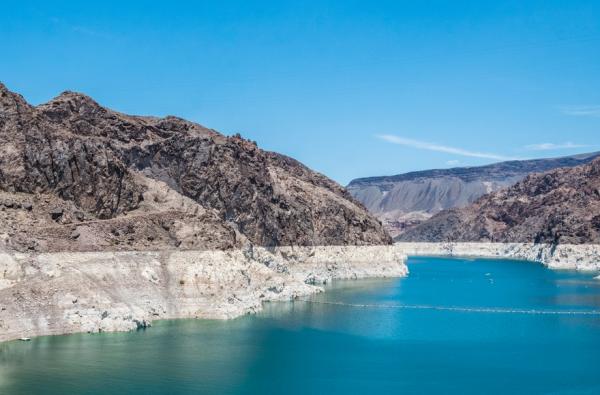US Federal Government rations water for Colorado River States
5 Sep 2022 by The Water Diplomat

Human demand, drought and climate change have drained more than 75% of the water in the nation’s largest reservoirs and have driven water reserves in the Colorado River to a historical low point. On the 15th of August, the states of the Colorado River Basin passed a deadline to collectively agree on joint reductions in water demand, triggering Federal intervention. In June, the Federal Bureau of Reclamation had issued an ultimatum to the seven states sharing the waters of the Colorado basin to either jointly agree on a reduction in water demand of at least 2,466 million mᶟ or face externally imposed cutbacks by the Federal Government. These rapid cutbacks were deemed necessary in order to avoid a so-called ‘Tier 2 shortage’ under the Drought Contingency Plan for the basin. A Tier 2 shortage is declared when the level of Lake Mead drops below 1, 050 feet above sea level, and the Federal government has therefore imposed a compulsory reduction in the existing water allocation to Arizona by 21%, Nevada by 8% and Mexico (the country) by 7%. However, these water demand reductions amount to a savings of 889 million m³ and had already been negotiated by the states in 2019. They fall far short of the total requested by the Federal government, which has now extended the deadline.
According to a report in the LA times, Bureau of Reclamation Commissioner Camille Calimlim Touton stated that much larger water savings were needed to protect the water levels in Lake Mead and Lake Powell. Lake Mead, the largest reservoir in the United States, is currently at its lowest level since the reservoir was first filled in 1937. The allocation of water among the seven states sharing the Colorado River is governed by a compact dating from 1922 which divides the Colorado into two water management areas – the Upper Basin and the Lower Basin – which have roughly equal shares to the wate of the river. Within each Division, the states are responsible to agree amongst themselves how the water should be apportioned. In response to dwindling supplies, in 2019, a new set of “Drought Contingency Plans” was agreed to, which involved the Lower Basin states agreeing to voluntary reductions in water use in order to maintain water levels in lake Mead. In 2021, the contingency plan was activated, triggering a reduction in water allocations to Arizona, Nevada, and Mexico. Subsequently, water agencies in California, Arizona and Nevada agreed to implement water restrictions, but this has not been enough to prevent the levels of lake Mead from dropping. If they do not succeed in negotiating an agreement on new cutbacks, the Federal Government may step in and take decisions on their behalf.
